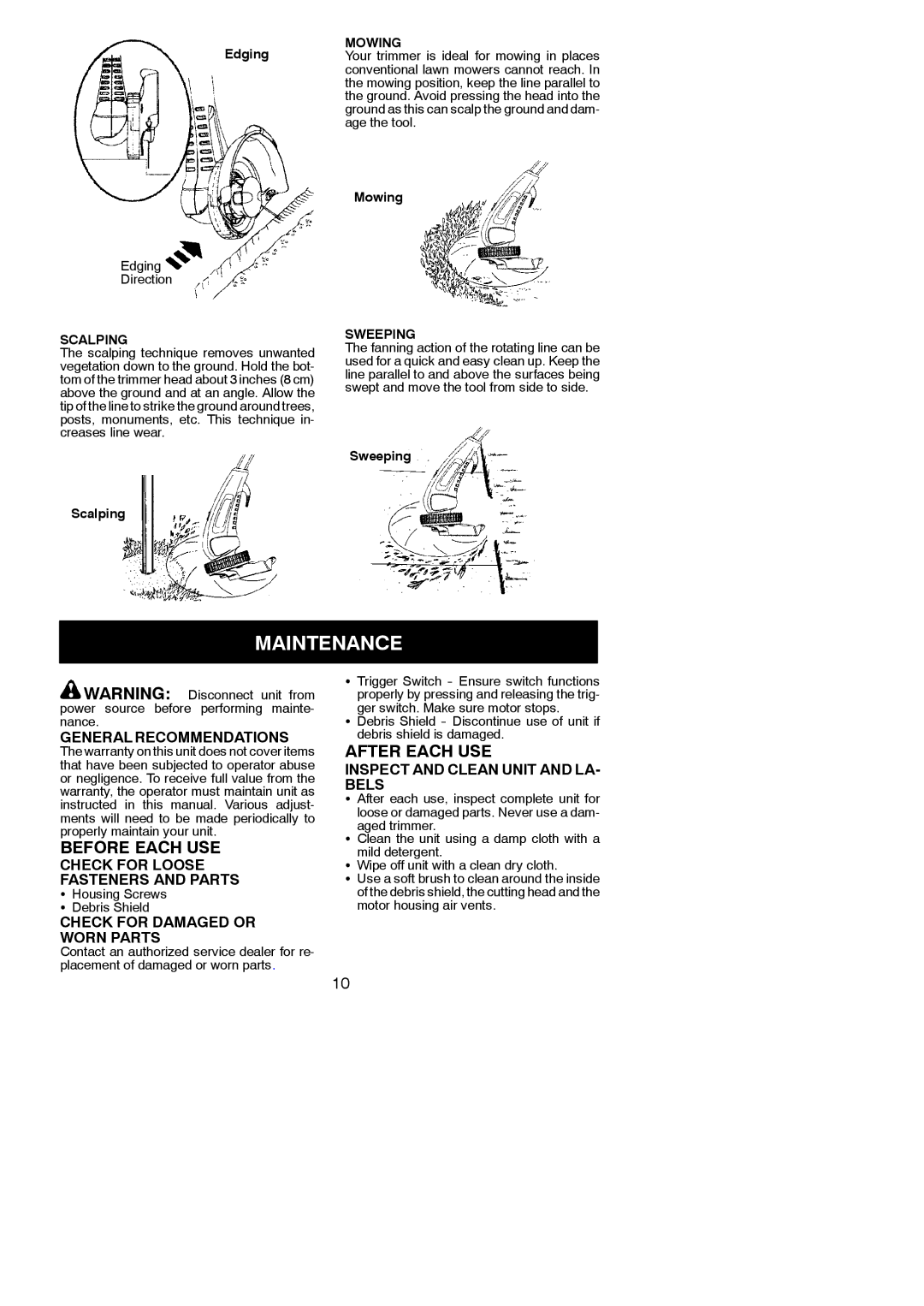
Edging
Edging
Direction
MOWING
Your trimmer is ideal for mowing in places conventional lawn mowers cannot reach. In the mowing position, keep the line parallel to the ground. Avoid pressing the head into the ground as this can scalp the ground and dam- age the tool.
Mowing
SCALPING
The scalping technique removes unwanted vegetation down to the ground. Hold the bot- tom of the trimmer head about 3 inches (8 cm) above the ground and at an angle. Allow the tip of the line to strike the ground around trees, posts, monuments, etc. This technique in- creases line wear.
Scalping
SWEEPING
The fanning action of the rotating line can be used for a quick and easy clean up. Keep the line parallel to and above the surfaces being swept and move the tool from side to side.
Sweeping
MAINTENANCE
![]() WARNING: Disconnect unit from power source before performing mainte- nance.
WARNING: Disconnect unit from power source before performing mainte- nance.
GENERAL RECOMMENDATIONS
The warranty on this unit does not cover items that have been subjected to operator abuse or negligence. To receive full value from the warranty, the operator must maintain unit as instructed in this manual. Various adjust- ments will need to be made periodically to properly maintain your unit.
BEFORE EACH USE
CHECK FOR LOOSE
FASTENERS AND PARTS
SHousing Screws S Debris Shield
CHECK FOR DAMAGED OR WORN PARTS
Contact an authorized service dealer for re- placement of damaged or worn parts.
STrigger Switch
ger switch. Make sure motor stops.
SDebris Shield
AFTER EACH USE
INSPECT AND CLEAN UNIT AND LA- BELS
SAfter each use, inspect complete unit for loose or damaged parts. Never use a dam-
aged trimmer.
SClean the unit using a damp cloth with a mild detergent.
SWipe off unit with a clean dry cloth.
SUse a soft brush to clean around the inside of the debris shield, the cutting head and the motor housing air vents.
10
